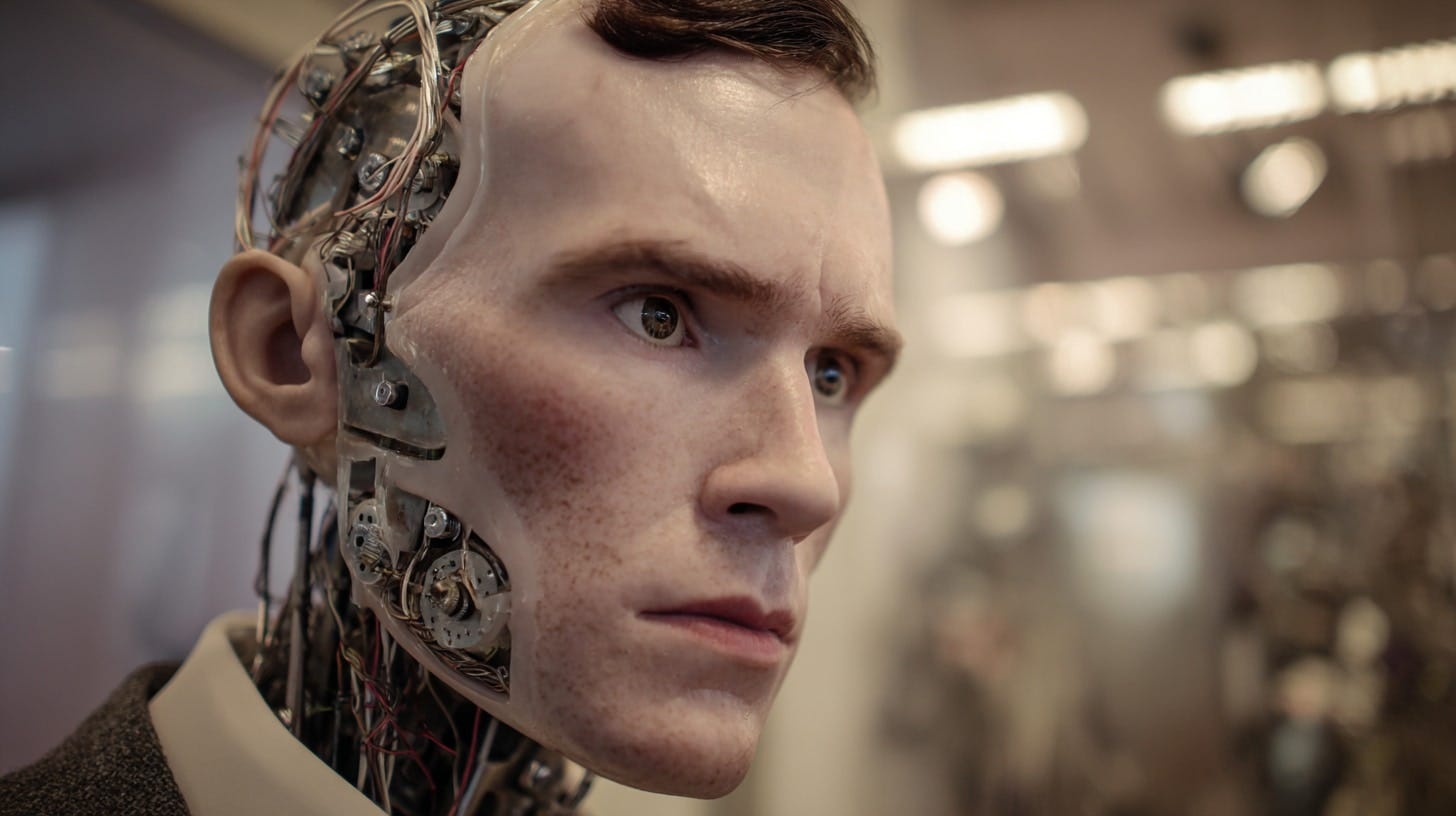Beyond the Turing Test
The power of artificial intelligence lies not in imitation, but in a different way of thinking that opens up new paths.
In 1950, at the very dawn of the computer age, mathematician Alan Turing posed a question that remains with us today: can machines think? To avoid the philosophical pitfalls of defining thought, he proposed a pragmatic standard which became known as the Turing test. A machine would be considered intelligent if, during conversation, it managed to convince a human interlocutor that it too was human. In doing so, Turing inscribed the idea of imitation at the core of discourse on artificial intelligence, whereby the pinnacle of machine intelligence is to become indistinguishable from human intelligence.
Today, more than seventy years later, public discourse at least still seems to persist in the same conceptual loop. With every leap forward in artificial intelligence capabilities, the initial questions typically posed are: Is it creative? Does it have emotions? Is it self-aware? Although researchers have long focused on solving specific problems, the public continues to measure artificial intelligence by a human yardstick, seeking a reflection of its own image in AI's responses, as if the ultimate goal were to create a perfect artificial mirror image of a human being.
While such a focus is appealing and understandable, it risks leading us into a blind alley, as the fundamental question itself may be poorly posed. What if human intelligence and subjectivity are not, in fact, sensible or optimal goals for the development of artificial intelligence? Our brains are, after all, the result of countless evolutionary makeshift solutions and compromises that once afforded our ancestors a greater chance of survival. Given that our humanity is essentially a byproduct of chance, stemming from a fundamental dissonance in our biological design, is it truly the best benchmark for measuring the progress of smart machines?
The human mind is by no means an elegant product of deliberate design. It is the result of a messy evolution that suddenly loaded an entirely new, incompatible "operating system" in the form of language onto ancient biological "hardware"—represented by neurological and biochemical processes in the brain and other mechanisms within the body. While this leap into abstract, symbolic thought enabled us to accumulate knowledge and build powerful civilizations, it simultaneously introduced a fundamental tension into our natural system.
Our biological makeup, geared towards finding food and mates, was suddenly repurposed for the pursuit of cultural goals such as status, meaning, and recognition. While biological drives subside upon achieving their objective—consuming a meal, for instance—the symbolic desire introduced by our entry into language is never truly satiated. It is precisely this internal friction that constitutes the source of the human drama: the perpetual feeling that something is missing, our capacity to act against our own interests, and also the creativity that draws nourishment from this same restlessness.
In animals, a simple biological cycle applies: hunger leads to seeking food; satiety brings calm. In humans, however, language intertwines this need with additional meanings. Food is no longer merely a source of calories but becomes a marker of status, identity, morality, and intimacy. We eat not only when hungry, but also out of boredom, anxiety, or for social reasons. Similarly, the reproductive instinct is transformed into a complex pursuit of love and recognition. This superimposition of culture onto biology makes us human, yet simultaneously leaves us perpetually restless and unsatisfied.
The endeavor to recreate this complex and contradictory human interiority within a machine is likely futile. We did not achieve flight by building a mechanical device that meticulously imitated every flap of a bird’s wings. Success came only once we understood the fundamental principles of aerodynamics and designed aircraft based on them. Therefore, the sensible goal of artificial intelligence should be to develop advanced forms of cognition, not to precisely replicate humanity with all its evolutionary baggage.
In research circles building new artificial intelligence models, there has been much discussion in recent years surrounding the goal of developing artificial general intelligence (AGI)—that is, a machine with cognitive capabilities equivalent to those of humans. In practice, however, progress is manifesting differently, as the path toward broader abilities leads not through the imitation of human versatility, but through the integration of powerful, specialized solutions.
Artificial intelligence is becoming increasingly adept at tasks once believed to be the exclusive domain of the human mind. In many areas, it has already surpassed us, or soon will. Today, it already excels at translation, solving difficult mathematical problems, programming, and other complex cognitive tasks. Moreover, systems like AlphaFold predict the 3D structure of proteins directly from amino acid sequences—a task that clearly surpasses human intuition and significantly accelerates biomedical research.
Artificial intelligence is not our competitor in humanity, but rather a tool that allows us to look beyond the constraints of our biological givens. Its power lies not in imitating humans, but in its radical alterity, as it can be incomparably superior to us in specific tasks. It is precisely this shift that raises urgent ethical questions about the control and safe application of such powerful tools, while simultaneously liberating development from the blind alley of imitation.
Perhaps it is time, therefore, to turn the Turing test on its head. Instead of asking whether a machine can fully convince us that it is equivalent to a human, we should be asking what we can safely achieve with an artificial intelligence that has no need to compare itself to humans, precisely because it is significantly better than us at certain tasks. Airplanes are excellent flying machines, even though they have little in common with birds.
Translated from the Slovene original, available here: Onkraj Turingovega testa.



